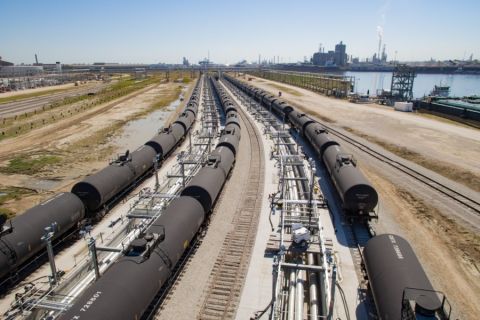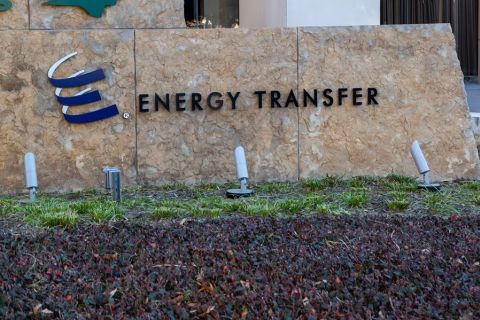The U.S. land and offshore rig counts may have stalled since last summer, but optimism reigns in the oil patch! Three research teams-Raymond James & Associates, A.G. Edwards and Merrill Lynch-now take issue with the lukewarm upstream spending forecasts for 2003 that were released by Lehman Brothers and Salomon Smith Barney in December. As you recall, the latter two surveyed more than 250 E&P firms, as they do every year, and found that E&P spending in North America would be flat to down this year, despite robust oil and gas prices. But it is those same high prices that have caused other analysts to deliver more cheery prognostications. These optimists also cite the decline in North American gas production, which they think of necessity will lead to more drilling in the second half, in order to prepare for the winter of 2003-2004. "Throw out the surveys," declares Raymond James' head of research-and frequent bull-Marshall Adkins in a recent report. "They overlook two key points: 1) E&P companies have no incentive to tell the truth to surveyors, and 2) actual cash flows (not budgets) drive actual E&P capital spending. In the late-2002 surveys, companies on average were assuming less than $3.50 per thousand cubic feet of gas although the 12-month strip was climbing above $4.50 and toward $5 per Mcf on the New York Mercantile Exchange at the time. "E&P spending is likely to be at least 20% higher than it was last year," he says. In nine of the past 10 years, Adkins says, E&P companies outspent their cash flows as they adjusted their spending in response to actual cash flow changes as commodity prices rose or fell. They budgeted in a conservative manner late last year, at survey time, but those numbers are not set in concrete. The oil and gas team at A.G. Edwards also thinks E&P spending will be healthier than the surveys indicated. "Recent forecasts are...misleading. Domestic spending could surprise on the upside," say Greg McMichael and Michael Scialla. "Our analysis of the lag between higher gas prices and increased drilling in past cycles indicates we are approaching the early stages of another spending cycle. We estimate capital outlays will climb 4% to 11% in 2003, primarily due to the strong outlook for natural gas markets." They caution that the gas rig count will not reach the 900 rigs they think necessary to keep U.S. production flat until late in the second half of the year. E&P analyst John Herrlin at Merrill Lynch thinks that although 2003 will be a conservative year like 2002, with uncertainty clouding the plans of E&P companies and investors alike, E&P spending will rise. "We see the E&Ps we follow increasing capex about 10%. We believe higher wellhead realizations will inspire second-half capex increases." Herrlin also says that more oil and gas property transfers will likely take place in 2003, from the integrated, mega-merged sellers to the independent-producer buyers, which will also lead to an increase in drilling activity later in the year. He speculates that the Republican-controlled Congress will pass an energy bill this year, and that it will contain a tax credit for unconventional development of coalbed methane and/or tight gas sands. If so, this will spark some additional drilling as "it will get some projects on the cusp of conversion drilled, because it adds a cushion to volatile commodity pricing." The thing to examine closely is the way money will be spent, that is, where it will be spent. Ocean Energy, for example, plans an impressive $1-billion campaign-but only about $150 million of that will be devoted to onshore U.S. spending. The bulk will be aimed at targets overseas and in the Gulf of Mexico. Many dollars will be working in Canada as well. We should not underestimate the importance of Canadian gas drilling to U.S. companies' overall growth plans. In mid-December in fact, 7 of the 11 most active operators in the western sedimentary basin (based on number of rigs running) were U.S. companies or Maple Leaf subsidiaries of same. These were Anadarko Petroleum, Apache, Burlington Resources, Devon, EOG Resources, ExxonMobil and Murphy Oil. By the way, this trend may continue, as most of the capital in Canadian investors' pockets flowed to royalty trusts last year, not to active E&P companies that drill wells. The trusts focus on buying up producing properties and using the resulting cash flow to pay their distributions, more than to drill new wells. Adkins tried to quantify how much a typical E&P company might generate in cash flow-and thus spending-if gas were $5 versus $3.50 for 2003, assuming it produced 100 billion cubic feet equivalent and 65% of that was natural gas. The higher gas price "would generate a huge 53% (or $92 million) increase in cash flow and spending!" The only limits standing in the way would be the amount of quality, ready-to-drill prospects, available rigs and people. But this would leave money to reduce debt or make acquisitions.
Recommended Reading
Canadian Railway Companies Brace for Strike
2024-04-25 - A service disruption caused by a strike in May could delay freight deliveries of petrochemicals.
Talos Energy Expands Leadership Team After $1.29B QuarterNorth Deal
2024-04-25 - Talos Energy President and CEO Tim Duncan said the company has expanded its leadership team as the company integrates its QuarterNorth Energy acquisition.
Energy Transfer Ups Quarterly Cash Distribution
2024-04-25 - Energy Transfer will increase its dividend by about 3%.
Guyana’s Stabroek Boosts Production as Chevron Watches, Waits
2024-04-25 - Chevron Corp.’s planned $53 billion acquisition of Hess Corp. could potentially close in 2025, but in the meantime, the California-based energy giant is in a “read only” mode as an Exxon Mobil-led consortium boosts Guyana production.
CNX, Appalachia Peers Defer Completions as NatGas Prices Languish
2024-04-25 - Henry Hub blues: CNX Resources and other Appalachia producers are slashing production and deferring well completions as natural gas spot prices hover near record lows.





